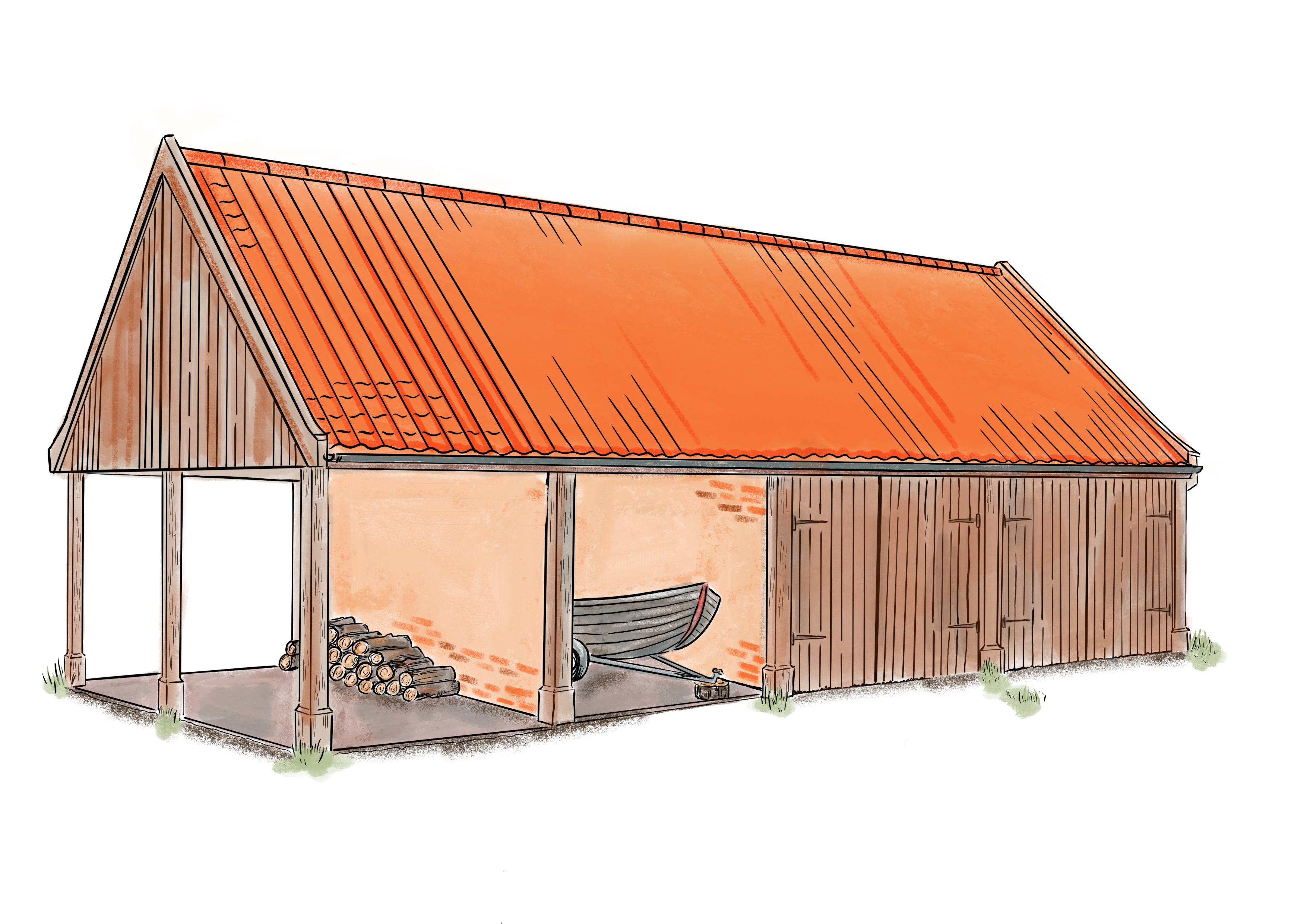Example 2: Cartsheds
The defining Characteristics:
- Smaller uninterrupted roofslopes and ridgelines.
- Generally solid masonry on three sides with open bays on the fourth side.
- Expressed posts supporting open, timber framed bays.
- An informal farmyard or field setting.
What makes a successful conversion:
- Avoid alterations such as dormers, rooflights and chimneys which would complicate the simple roofscape and introduce unwanted domestication.
- Minimise the number of new openings in the masonry, and avoid any solid masonry infill within the open bays.
- Retain the prominence of the supporting posts by setting any infill in behind them. This creates a shadow line at eaves level and makes the infill more recessive. Less permanent materials such as glazing/boarding also help in this respect.
- Avoid formal planting schemes and suburban means of enclosure and surfacing which would be visually at odds with the character of the area, or which would separate it off from its context.
- Be mindful of the quantum of glazing proposed to elevations and roofscape to reduce impact on dark skies.
- Ensure ecology is considered at an early stage and protected species surveys have been undertaken.
- Use finishing materials which react to and knit into the prevailing architectural and landscape context.
- Take opportunities to enhance existing hedgerows and improve soft informal landscaping.

Typical cart shed prior to conversion

Cart sheds are best converted with visually lightweight infill walls set behind the original posts.